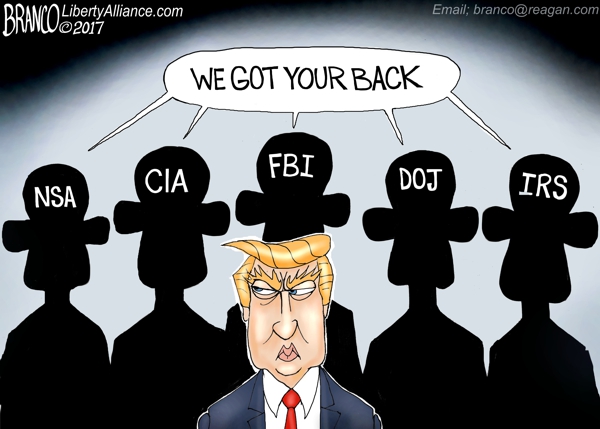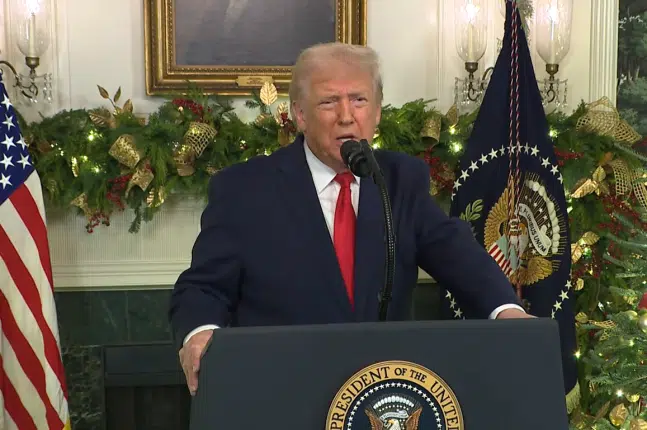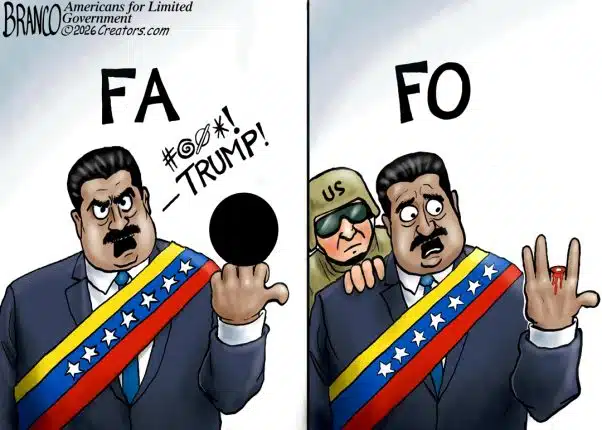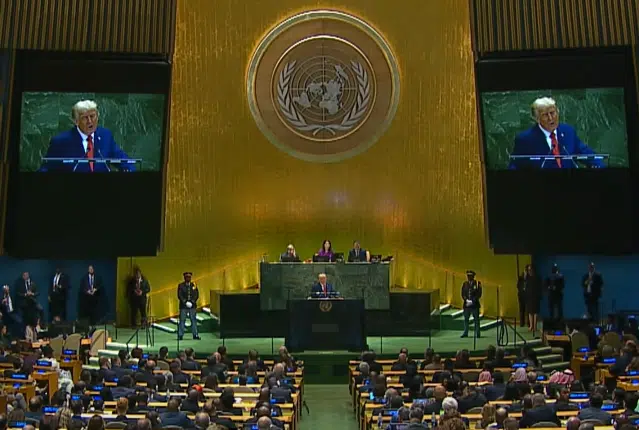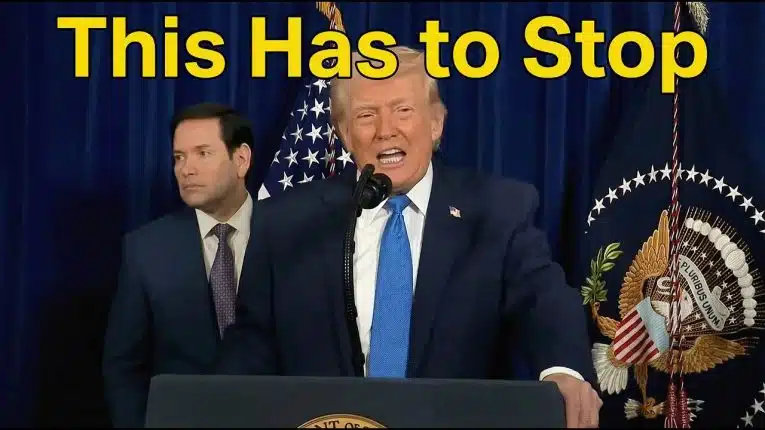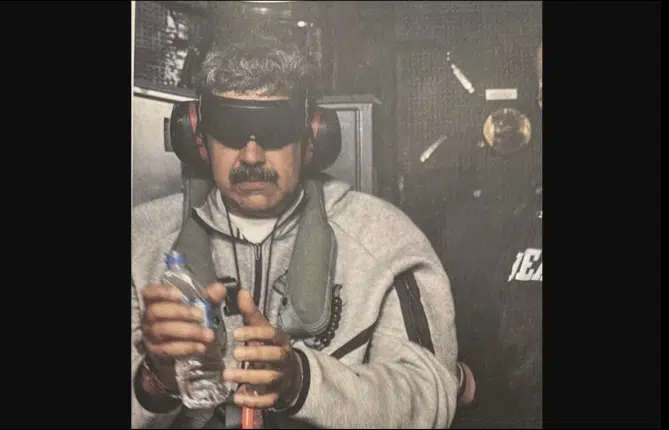The FBI did not begin the process of validating information from former British spy Christopher Steele that was used as the basis for false Justice Department and intelligence agency allegations that President Donald Trump and his campaign were Russian agents until Jan. 2017 when it began interviewing Steele’s sources, months after spying warrants had already been obtained on the campaign and renewed after the election.
That is one of the biggest takeaways of the Dec. 9 Justice Department report by Inspector General Michael Horowitz on abuses under the Foreign Intelligence Surveillance Act (FISA) that occurred in 2016.
The Justice Department just took it all on faith. That Steele was an established intelligence agent, that he had a purported track record that made him appear to be reliable and that the hearsay from his sources he relayed was actually true. He had alleged that Trump and his campaign had conspired with Russia on the DNC and Wikileaks hacks with their “full knowledge and support.”
That’s apparently what it took in the Obama administration to get top secret surveillance of the Trump presidential campaign, the opposition party, in an election year. Well-placed gossip from well-credentialed officials. It doesn’t need to be true or even verifiable.
In fact, per Horowitz, no efforts were made to contact Steele’s sources prior to obtaining the spying warrants until after the election and after the surveillance had already been renewed once, in Jan. 2017. Nor was a lack of corroboration anything more than a speed bump to obtaining the surveillance.
According to the inspector general report, once the main source that Steele used was contacted, “the Primary Sub-source made statements during his/her January 2017 FBI interview that were inconsistent with multiple sections of the Steele reports, including some that were relied upon in the FISA applications. Among other things, regarding the allegations attributed to Person 1, the Primary Sub-source’s account of these communications, if true, was not consistent with and, in fact, contradicted the allegations of a ‘well-developed conspiracy’…”
And yet, per Horowitz, the FBI’s “receipt of Steele’s election reporting on September 19, 2016 played a central and essential role in the FBI’s and Department’s decision to seek the FISA order.” Without Steele, they had nothing. And without his sources, he had nothing.
And if they had tried to verify it by interviewing the sources, this whole thing might have been rejected from the get-go.
The only official who appeared to raise any questions was then-National Security Division Deputy Assistant Attorney General Stuart Evans, who held up the FISA application because it had come to light that Steele and Fusion GPS had been hired by the Democratic National Committee (DNC) and the Hillary Clinton campaign. Evans fought and had included in the FISA warrant application a footnote pointing out the probable political origins and motivations of the Steele dossier.
Evans told the inspector general that if the sub-source’s contradictions had been brought to the National Security Division’s attention, it could have been cause to cancel any further renewals of the FISA application.
Per Horowitz, “According to Evans, had OI been made aware of the information, such discussions might have included the possibility of foregoing the renewal request altogether, at least until the FBI reconciled the differences between Steele’s account and the Primary Sub-source’s account to the satisfaction of OI.”
Instead, they covered it up: “However, we found no evidence that the Crossfire Hurricane team ever considered whether any of the inconsistencies warranted reconsideration of the FBI’s assessment of the reliability of the Steele reports or notice to OI before the subsequent renewal applications were filed. Instead, the second and third renewal applications provided no substantive information concerning the Primary Sub-source’s interview…”
And made it sound like the sub-source had substantiated Steele when he had contradicted Steele, with the FBI “offer[ing] only a brief conclusory statement that the FBI met with the Primary Sub-source ‘[i]n an effort to further corroborate Steele’s reporting’ and found the Primary Sub-source to be ‘truthful and cooperative.’ We believe that including this statement, without also informing OI and the court that the Primary Subsource’s account of events contradicted key assertions in Steele’s reporting, left a misimpression that the Primary Sub-source had corroborated the Steele reporting.”
But Steele’s source had not corroborated the reporting that had found their way into the FISA application.
For example, Steele had reported, based on these sources, that “there was a well-developed conspiracy of co-operation” between then-candidate Donald Trump and Russia, and that starting in July 2016, “This was managed on the TRUMP side by the Republican candidate’s campaign manager, Paul MANAFORT, who was using foreign policy advisor, Carter PAGE, and others as intermediaries. The two sides had a mutual interest in defeating Democratic presidential candidate Hillary CLINTON, whom President PUTIN apparently both hated and feared… Inter alia, Source E, acknowledged that the Russian regime had been behind the recent leak of embarrassing e-mail messages, emanating from the Democratic National Committee (DNC), to the WikiLeaks platform. The reason for using WikiLeaks was ‘plausible deniability’ and the operation had been conducted with the full knowledge and support of TRUMP and senior members of his campaign team.”
But when the FBI interviewed the sub-source its summary stated, per the Horowitz report, “[the Primary Sub-source] did not recall any discussion or mention of Wiki[L]eaks.”
On President Trump’s alleged activities at the Ritz Carlton hotel, that was just a rumor: “the Primary Sub-source told the FBI that, while Report 80 stated that Trump’s alleged sexual activities at the Ritz Carlton hotel in Moscow had been ‘confirmed’ by a senior, western staff member at the hotel, the Primary Sub-source explained that he/she reported to Steele that Trump’s alleged unorthodox sexual activity at the Ritz Carlton hotel was ‘rumor and speculation’ and that he/she had not been able to confirm the story.”
On details about Trump foreign policy advisor Carter Page being offered a stake in Rosneft worth billions, those were apparently made up: “a meeting allegedly held between Carter Page and Igor Sechin, the President of Rosneft, a Russian energy conglomerate. Report 134 stated that, according to a ‘close associate’ of Sechin, Sechin offered ‘PAGE/TRUMP’s associates the brokerage of up to a 19 percent (privatized) stake in Rosneft’ in return for the lifting of sanctions against the company. The Primary Sub-source told the FBI that one of his/ her subsources furnished information for that part of Report 134 through a text message, but said that the sub-source never stated that Sechin had offered a brokerage interest to Page. We reviewed the texts and did not find any discussion of a bribe, whether as an interest in Rosneft itself or a ‘brokerage.’”
Steele had also alleged that former Trump attorney Michael Cohen had traveled to Prague in the summer of 2016 to mop up the supposed fallout of the Trump-Russia DNC hack conspiracy. Here, too, the FBI ultimately debunked that allegation, too. Per Horowitz, “the FBI determined that some of the allegations in the Steele reporting, including that Trump attorney Michael Cohen had traveled to Prague in late summer 2016 to meet with Kremlin representatives and that ‘anti-Clinton hackers’ had been paid by the ‘[Trump] team’ and Kremlin, were not true.”
That should have been it. The end of the investigation. But it did not end. Thanks to former Attorney General Jeff Sessions’ recusal, it went on and on, with the FISA warrant being renewed and the investigation of the Trump administration deepening with the appointment of Special Counsel Robert Mueller.
In March 2017, when the FBI returned to question the primary sub-source again, it again undercut the veracity of Steele’s reporting: “the Primary Sub-source felt that the tenor of Steele’s reports was far more ‘conclusive’ than was justified. The Primary Subsource also stated that he/she never expected Steele to put the Primary Subsource’s statements in reports or present them as facts. According to WFO Agent 1, the Primary Sub-source said he/ she made it clear to Steele that he/she had no proof to support the statements from his/her sub-sources and that ‘it was just talk.’”
It gets better. In March the primary sub-source admitted it was all hearsay: “the Primary Sub-source explained that his/her information came from ‘word of mouth and hearsay;’ ‘conversation that [he/she] had with friends over beers;’ and that some of the information, such as allegations about Trump’s sexual activities, were statements he/she heard made in ‘jest.’ The Primary Sub-source also told WFO Agent 1 that he/she believed that the other sub-sources exaggerated their access to information and the relevance of that information to his/her requests. The Primary Sub-source told WFO Agent 1 that he/she ‘takes what [sub-sources] tell [him/ her] with ‘a grain of salt.’’”
We already knew Steele had not been to Russia and that he had relied on a network of sub-sources. Per Horowitz, now we know that the primary sub-source had sub-sources, and not even they had access to the persons being reported on: “the Primary Sub-source stated to WFO Agent 1 that, in contrast to the impression left from the election reports, his/her sub-sources did not have direct access to the persons they were reporting on. Instead, the Primary Sub-source told WFO Agent 1 that their information was ‘from someone else who may have had access.’”
Steele said his sources were Russian, but they were not named: Source A was a “former top Russian intelligence officer”; Source B was a “senior Russian Foreign Ministry figure”; Source C was a “senior Russian financial official”; Source D was a “close associate of Trump” (golden showers source); Source E was an “ethnic Russian close associate” of Trump (golden showers source); Source F was a “female staffer of the hotel”; and source G was a “senior Kremlin official”.
Now we know, based on Steele’s primary sub-source, that they were not sources at all.
Even Steele would cast doubt on his primary source, calling him to FBI agents a “boaster,” an “egoist” and “may engage in some embellishment.” Yet, this information too was kept out of the FISA application.
None of the President’s chief accusers stood by the allegations when questioned. So why did the Justice Department do so for so long?
In court testimony, Steele said “all material contained this risk” of being disinformation, stating that the allegations needed to be “further corroborated and verified.”
Former FBI Director James Comey testified in Jan. 2017 that the information Steele provided was “salacious and unverfified.”
Eventually, Special Counsel Robert Mueller debunked the entire conspiracy theory. From the Mueller report: “[T]he investigation did not establish that members of the Trump Campaign conspired or coordinated with the Russian government in its election interference activities,” and “the evidence does not establish that the President was involved in an underlying crime related to Russian election interference.”
That included all members of campaign. Per Mueller, “the Office did not find evidence likely to prove beyond a reasonable doubt that Campaign officials such as Paul Manafort, George Papadopoulos, and Carter Page acted as agents of the Russian government — or at its direction, control or request — during the relevant time period.” As for former Trump attorney Michael Cohen, per Mueller, “Cohen had never traveled to Prague…” which discredited a key allegation from the Steele dossier.
And even after the exculpatory information was widely known in the Department’s top leadership, the Department conspired to conceal that information from the FISA Court. Per Horowitz: “the second and third renewal applications provided no substantive information concerning the Primary Sub-source’s interview,” when the key witness on behalf of the government of at this point criminal wrongdoing was directly contradicting the facts the government was purporting in a court of law.
They kept that away from a federal judge.
And Mueller managed to keep that out of his final report.
This was the greatest abuse of power in American history.
So, there were red flags all over the place.
But here’s the real kicker. Even with all of these discrepancies and contradictions, that if known at the time might have stopped the spying dead in its tracks and meant there was no FISA application, Horowitz remarkably finds that the FISA applications were apparently all allowable under the law.
Meaning the problem is FISA itself and the standards of evidence used to obtain top secret surveillance on American citizens. Or, so we have been led to believe these past few years.
That hearsay is allowed. Political gossip is allowed. They might as well use rubber stamps. Probable cause is whatever the agents and their supervisors believe it is.
Here, the report from Horowitz is a case study in arbitrary decision making and the moving of goal posts, and yet Horowitz managed to go 476 pages without even once using the word “arbitrary.”
Horowitz also found that the investigations, even before FISA warrants were granted, based on the information the FBI had at the time, were “sufficient to predicate the investigation.” Here Horowitz cited “the low threshold for predication in the AG Guidelines and the DIOG…” giving agents broad latitude with which to launch investigations.
Horowitz stated, “This information provided the FBI with an articulable factual basis that, if true, reasonably indicated activity constituting either a federal crime or a threat to national security, or both, may have occurred or may be occurring. For similar reasons, as we detail in Chapter Three, we concluded that the quantum of information articulated by the FBI to open the individual investigations on Papadopoulos, Page, Flynn, and Manafort in August 2016 was sufficient to satisfy the low threshold established by the Department and the FBI.”
This, however, comes with a grain of salt.
Attorney General William Barr appears as committed as ever to preventing these abuses in the future, and slammed the 2016 investigation: “The Inspector General’s report now makes clear that the FBI launched an intrusive investigation of a U.S. presidential campaign on the thinnest of suspicions that, in my view, were insufficient to justify the steps taken. It is also clear that, from its inception, the evidence produced by the investigation was consistently exculpatory. Nevertheless, the investigation and surveillance was pushed forward for the duration of the campaign and deep into President Trump’s administration. In the rush to obtain and maintain FISA surveillance of Trump campaign associates, FBI officials misled the FISA court, omitted critical exculpatory facts from their filings, and suppressed or ignored information negating the reliability of their principal source. The Inspector General found the explanations given for these actions unsatisfactory. While most of the misconduct identified by the Inspector General was committed in 2016 and 2017 by a small group of now-former FBI officials, the malfeasance and misfeasance detailed in the Inspector General’s report reflects a clear abuse of the FISA process.”
And U.S. Attorney John Durham, who is leading a criminal investigation into the 2016 spygate fiasco, said in a rare statement on Dec. 9 that the Justice Department does not agree with Horowitz’s findings on the predicate for the investigations.
Per Durham, “our investigation is not limited to developing information from within component parts of the Justice Department. Our investigation has included developing information from other persons and entities, both in the U.S. and outside of the U.S. Based on the evidence collected to date, and while our investigation is ongoing, last month we advised the Inspector General that we do not agree with some of the report’s conclusions as to predication and how the FBI case was opened.”
Meaning there are still more revelations to be had in terms of the origins of the Justice Department and intelligence agencies’ false allegations that President Trump and his campaign were Russia agents. The troubling part here is that FISA, designed to prevent this sort of political spying from occurring, appears to have allowed it. And now with reauthorization of FISA kicked off until March, we need to ask whether FISA can be fixed to prevent this from ever happening again — or if it should just be repealed.
This is a day of shame for the Justice Department, but it provides a ray of hope that liberty might be restored — but only if justice is delivered. We are looking to you, Mr. Attorney General. Show America how it is done.
Robert Romano is the Vice President of Public Policy at Americans for Limited Government.


